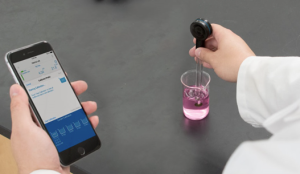
pH calibration solutions (pH buffers) are essential when measuring pH with meters and electrodes. While professionally designed pH buffers may not be as financially conservative as homemade buffers, they have significantly more accurate results, which are essential in the long run.
Why do you need to calibrate a pH meter?
Frequent calibration is critical to achieving accurate and reliable results. Electrodes are based on slope and offset (the Nernst equation). Calibration makes up for an aging electrode by determining its actual slope and offsets when using known buffers. Regular pH calibrations can also alert you to any damages in the electrode. If the slope/offset numbers are off during calibration, this is a good sign that the probe requires assessment and possible replacement.
Standard pH calibration solutions
Standard pH solutions have an accuracy of +/- 0.01pH at 25 degrees Celsius. The most commonly used buffers are dyed in different colours for easy identification during work. Standard pH calibration buffers are very versatile and applicable in most situations and with most meters.
Technical pH calibration solutions
Technical solutions have the same accuracy as the standard solutions, however, they come in a wider range, hitting nearly every point on the pH scale. This makes bracketing possible (two-point or multi-point calibration). This consists of calibrating to two pH points, one above and one below your expected pH range. For better accuracy, it is advised to perform a third calibration at pH 7.01, since this is how the offset is determined.
Millesimal pH calibration solutions
Millesimal buffers come in a wide range of pH ranges (less than technical). Millesimal solutions produce the greatest accuracy, accurate to +/- 0.002pH. Millesimal buffers are of great use in settings such as labs, water plants, and medical research facilities where pinpoint accuracy is crucial.
Maintaining your pH calibration solutions
With all calibration solutions, there are necessary precautions that one must take to maintain their integrity and accuracy. To prevent contaminating your buffer:
- Never submerge your electrode right into the bottle
- Pour out just what is needed into a container rinsed with de-ionized water and use that for your calibration
- Never pour used buffer back into the bottle!
Calibrating as frequently as possible is recommended but not essential depending on how important it is to obtain maximum accuracy.






